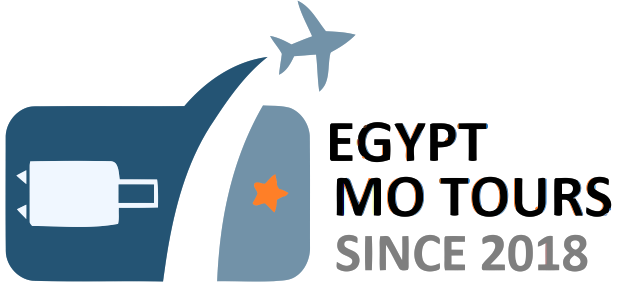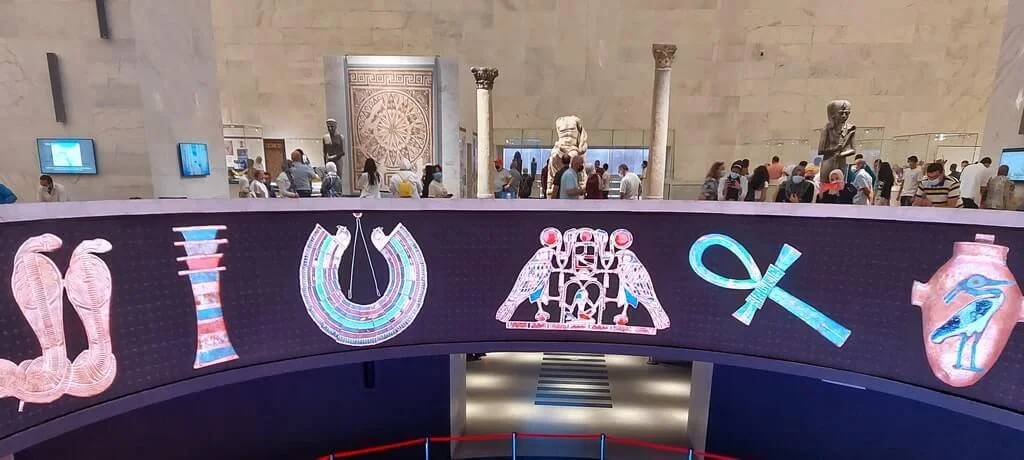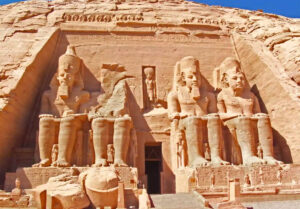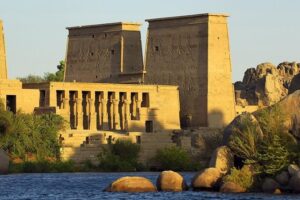A Guide to Ancient Egyptian Symbolism
Ancient Egyptian civilization was rich with symbolism. Egyptians used symbols in every aspect of their lives. They represented their beliefs about the gods, the cosmos, life, and the afterlife. These symbols are not just decorations; they are a language. They tell us about a culture’s deepest values.
Key Symbols and Their Meanings
Ancient Egyptian art and hieroglyphs are full of powerful symbols. Each one carries a specific meaning, often tied to a god or a core belief.
The Ankh
The Ankh is one of the most recognizable symbols of ancient Egypt. It is a cross with a loop at the top. The Ankh represents life, eternal life, and the breath of life. Egyptians often depicted their gods holding it. The Ankh symbolized immortality. It also represented the life-giving power of the sun and the Nile. It remains a powerful symbol today.
The Scarab
The Scarab beetle was a potent symbol. It represented creation, rebirth, and resurrection. Egyptians observed the beetle rolling a ball of dung. They saw this as a parallel to the sun god Ra rolling the sun across the sky. The scarab was linked to the god Khepri, a form of Ra. Amulets in the shape of a scarab were very popular. Egyptians placed them in tombs to ensure the deceased’s rebirth in the afterlife.
The Eye of Horus
The Eye of Horus is a symbol of protection, royal power, and good health. Ancient Egyptians believed it had healing and protective qualities. The myth of Horus losing his eye in a battle with his rival Seth is a central part of this symbolism. The god Thoth later restored the eye. This restoration symbolized healing and wholeness. Egyptians often wore Eye of Horus amulets for protection. They also painted the symbol on the prows of boats to ensure safe travel.
Ancient Egyptian Symbolism: Gods and Animals
The ancient Egyptians saw their gods in the form of animals. They believed these animals embodied the gods’ specific traits and powers.
The Falcon
The Falcon represented the sky and the sun. It was a symbol of the god Horus, who was a sky god. Pharaohs often associated themselves with Horus. The falcon symbolized their divine right to rule. It also represented swiftness and a soaring perspective.
The Cobra (Uraeus)
The Cobra, specifically the rearing cobra, or Uraeus, symbolized divine authority. It was a protective emblem of royalty. Pharaohs wore the Uraeus on their headdresses. It represented the goddess Wadjet, a protective deity of Lower Egypt. The Uraeus was a powerful symbol. It showed the pharaoh’s ability to strike down enemies with the venom of the cobra.
The Ibis Bird
The Ibis was the sacred animal of the god Thoth. Thoth was the god of knowledge, writing, and wisdom. The Ibis symbolized these qualities. Scribes often used the Ibis as a representation of their craft and their reverence for knowledge.
Ancient Egyptian Symbolism: Cosmic and Natural
Ancient Egyptians drew much of their symbolism from the natural world around them. They saw divine order in the cycles of the sun, the Nile, and the stars.
The Sun Disk
The Sun Disk was the most important cosmic symbol. It represented the sun god Ra, the creator god. The Sun Disk symbolized life, light, and creation. Pharaohs often wore it on their crowns. It linked them directly to the divine source of power and existence. The pyramids themselves were a form of sun symbol. They represented the sun’s rays turning to stone.
The Pyramid
The Pyramid represented the primeval mound from which the world was created. It was a symbol of resurrection and the journey to the afterlife. Its shape, with its slopes reaching to the sky, symbolized a ramp to heaven for the pharaoh’s soul.
The Papyrus and Lotus
The Papyrus and Lotus were symbols of Upper and Lower Egypt. The Lotus flower represented the sun and creation. It closes at night and opens in the morning. This cycle symbolized rebirth and regeneration. The Papyrus plant symbolized the fertile marshes of the Nile Delta. It represented new life and the northern part of the kingdom. When shown together, the Papyrus and Lotus symbolized a unified Egypt.
A Timeless Legacy
Ancient Egyptian symbolism is a fascinating window into their worldview. It shows a deep connection to nature, a strong belief in the afterlife, and a profound reverence for the divine. These symbols are a testament to the sophistication of ancient Egyptian thought. They continue to captivate and inspire people all over the world.











